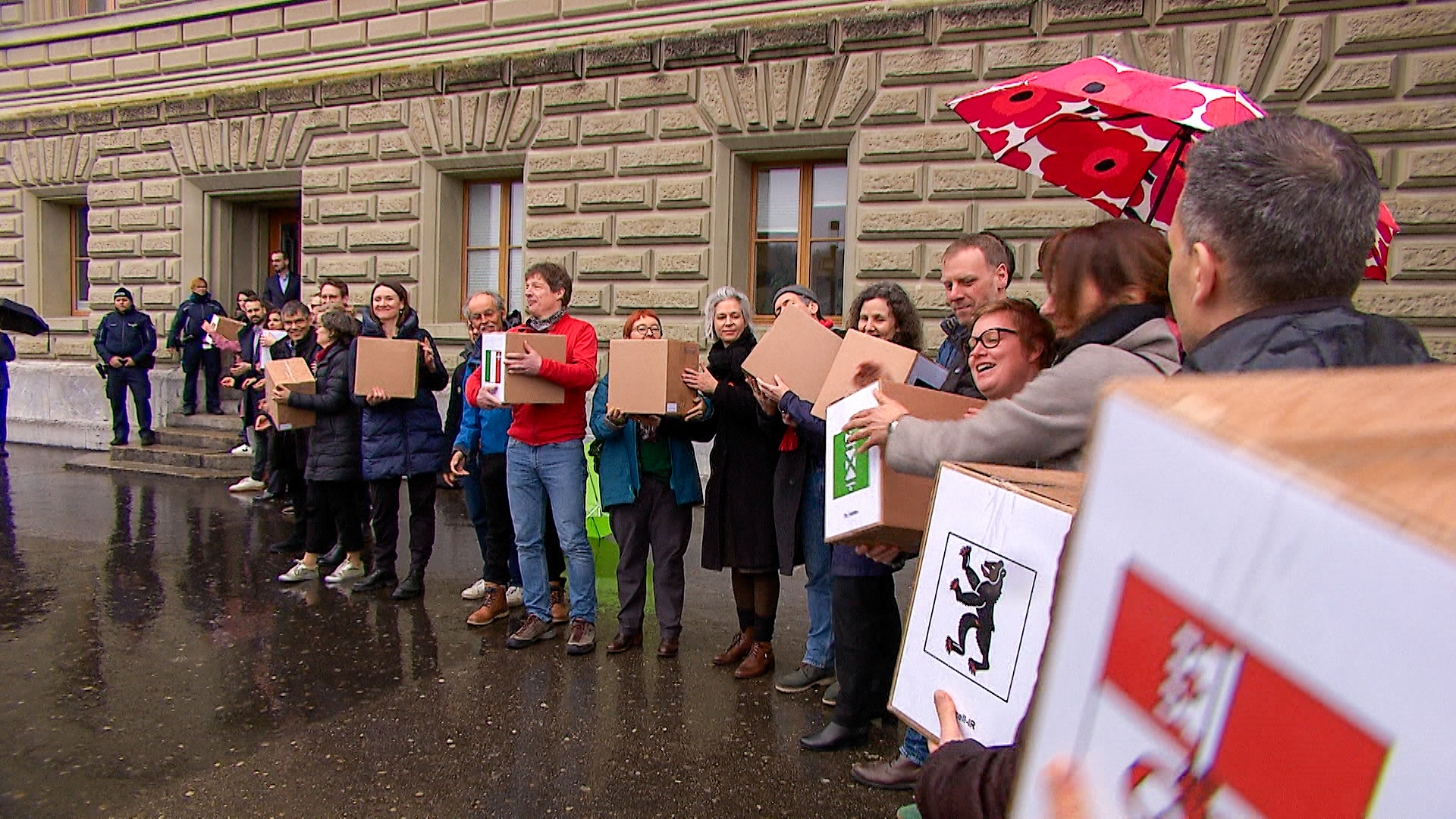
Swiss fireworks release up to 400 tonnes of particulate matter

According to the Swiss federal authorities, fireworks release 200 to 400 tonnes of particulate matter every year.
On Saturday, the Federal Office for the Environment (FOEN) drew attention to the environmental impact of fireworks in view of the upcoming New Year’s Eve. According to the Federal Office of Police, between 1,000 and 2,000 tonnes of fireworks are used in Switzerland, particularly on the national holiday and at the new year celebrations.
+ Get the most important news from Switzerland in your inbox
Pyrotechnic firework sets account for a quarter of this, with the rest being packaging made of wood, cardboard, plastic or clay. In addition to black powder, the firework sets also consist of colouring metal compounds.
According to the Federal Office for the Environment, these fireworks produce around 200 to 400 tons of particulate matter per year. This means that fireworks account for one to two percent of total annual emissions. The particulate matter also ends up in soil and water through precipitation.
The suspended particles remain in the air for a long time, especially in cold temperatures and so-called inversions. Data from the National Air Pollution Monitoring Network shows that there are high concentrations of particulate matter in the vicinity of burning fireworks.
Depending on weather conditions, the daily average limit value of 50 micrograms per cubic meter of air set out in the Ordinance on Air Pollution Control could be exceeded. In addition, the noise from fireworks is perceived as disturbing by some of the population and frightens domestic, farm and wild animals. Exposure to noise and pollutants can affect the health of humans and animals. It is also important to dispose of spent fireworks and packaging safely and correctly, writes the FOEN.
Adapted from German by DeepL/ac
This news story has been written and carefully fact-checked by an external editorial team. At SWI swissinfo.ch we select the most relevant news for an international audience and use automatic translation tools such as DeepL to translate it into English. Providing you with automatically translated news gives us the time to write more in-depth articles.
If you want to know more about how we work, have a look here, if you want to learn more about how we use technology, click here, and if you have feedback on this news story please write to english@swissinfo.ch.

In compliance with the JTI standards
More: SWI swissinfo.ch certified by the Journalism Trust Initiative
















![The four-metre-long painting "Sonntag der Bergbauern" [Sunday of the Mountain Farmers, 1923-24/26] had to be removed by a crane from the German Chancellery in Berlin for the exhibition in Bern.](https://www.swissinfo.ch/content/wp-content/uploads/sites/13/2025/12/01_Pressebild_KirchnerxKirchner.jpg?ver=14ffbad8)













You can find an overview of ongoing debates with our journalists here . Please join us!
If you want to start a conversation about a topic raised in this article or want to report factual errors, email us at english@swissinfo.ch.